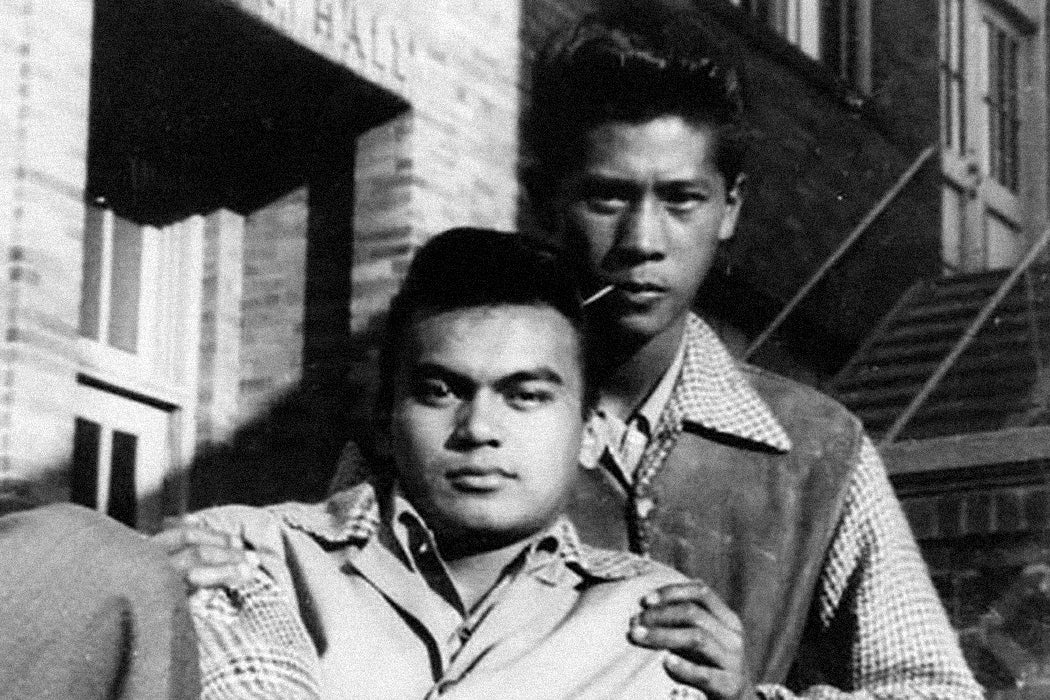In 1938, the Los Angeles Times writer Maddin Malone described a trend he’d noticed on the streets of the West Coast metropolis: “the little brown men from the Philippines [sic] are two or three years ahead of the styles and the well dressed American in a few seasons will be wearing what they are wearing down in Los Angeles and Main streets now.”
And Malone wasn’t the only one to think so. As American Studies scholar Denise Khor writes, in the 1930s and 1940s, Filipinos, including those who spent their days laboring in farm fields, were widely known for their sharp sense of style.
In the late 1920s, the federal government made immigration increasingly difficult for Asians. Since the Philippines was a US territory, it remained exempt from these limits until 1934. Young men from the islands flocked to America’s Pacific Coast, filling labor gaps in agricultural, lumber, and canning industries. Many bought cars on credit, allowing them to travel from one remote job to the next as well as giving them access to urban centers.
It was in these cities that Filipino laborers gathered to find community—and go to the movies. Khor notes that many of these immigrants had grown up watching white American culture on the big screen, and movie houses remained a huge draw in the urban centers of the West Coast. But they frequently encountered discrimination there. Some theaters confined them to segregated sections while others posted signs banning Filipinos entirely. Yet others, particularly Japanese-owned ones, specifically catered to Filipino audiences.
Inspired by Hollywood actors, many Filipino immigrants bought expensive, custom-fitted McIntosh suits. Filipino-run tailor shops popped up to sell them. And, between stints of grueling labor, many of these well-dressed men frequented dance halls. To some white Californians, this was a problem. Speaking to the Northern Monterey Chamber of Commerce in 1929, Judge D. W. Rohrback complained that the dance halls allowed Filipino men to “strut like peacocks and attract the eyes of young American and Mexican girls.”
In 1929 and 1930, white Californians staged violent anti-Filipino campaigns. In one case, hundreds of white residents of Watsonville, California, formed mobs, attacking Filipino men in the city and at local ranches. According to Khor, unlike attacks on Chinese and Japanese immigrants, who were often framed as isolated and frighteningly foreign, racism against Filipinos often hinged on their fluency with American culture. Like the white Californians who targeted Mexican American immigrants in the later zoot suit riots, the attackers of Filipinos used fashion and style as an excuse to act.
“The Filipinos got into trouble at Watsonville because they wore ‘sheiker’ clothes, danced better and spent their money more lavishly than their Nordie fellow farm hands,” one Federal Writers Project contributor wrote at the time.
Weekly Newsletter
But Filipinos persisted—and kept going to the movies. By the 1940s, many theaters were holding special midnight showings of films from the Philippines.
“At the segregated midnight hours and in the dimly lit theater, Filipino audiences could thus enjoy these projections of homeland imaginings without public censure,” Khor writes. “They could nurture their own bonds and relish the time in the dark.”
Support JSTOR Daily! Join our new membership program on Patreon today.







